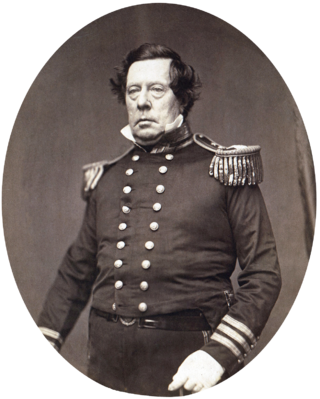
Matthew Calbraith Perry was a United States Navy officer who commanded ships in several wars, including the War of 1812 and the Mexican–American War. He played a leading role in the Perry Expedition that ended Japan's isolationism and the Convention of Kanagawa between Japan and the United States in 1854.
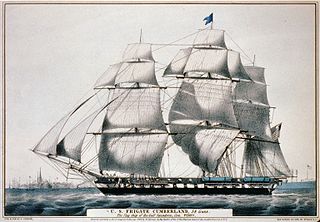
The first USS Cumberland was a 50-gun sailing frigate of the United States Navy. She was the first ship sunk by the ironclad CSS Virginia.

USS Dale was a sloop-of-war in the United States Navy commissioned on 11 December 1839. Dale was involved in the Mexican–American War, the American Civil War, operations along Africa to suppress slave trade, and was used by the U.S. Revenue Cutter Service and later the U.S. Coast Guard, among other activities. Dale was placed into ordinary numerous times.
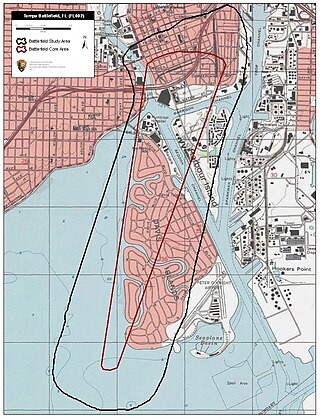
The Battle of Tampa, also known as the "Yankee Outrage at Tampa", was a minor engagement of the American Civil War fought June 30 – July 1, 1862, between the United States Navy and a Confederate artillery company charged with "protecting" the village of Tampa, Florida. Although small, Tampa's port was a key hub of trade for Central Florida, and several blockade runners from Tampa regularly slipped past the Union naval blockade that extended down the Atlantic coast around to Florida's west coast.
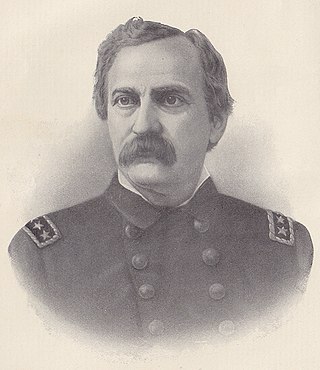
William Harwar Parker was an officer in the United States Navy and later in the Confederate States Navy. His autobiography, entitled Recollections of a Naval Officer 1841–1865, provides a unique insight into the United States Navy of the mid-19th century during an era when the Age of Sail was coming to an end and the advent of steam power and ironclads was beginning.

The Pacific Squadron of the United States Navy, established c. 1821 and disbanded in 1907, was a naval squadron stationed in the Pacific Ocean in the 19th and early 20th centuries.
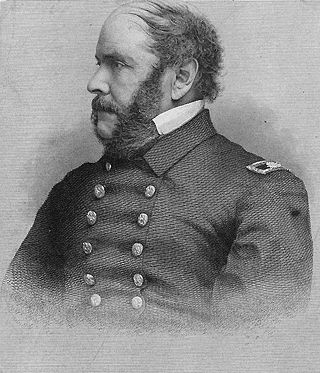
John Ancrum Winslow was an officer in the United States Navy during the Mexican–American War and the American Civil War. He was in command of the steam sloop of war USS Kearsarge during her historic 1864 action off Cherbourg, France, with the Confederate sea raider CSS Alabama.

The East India Squadron, or East Indies Squadron, was a squadron of American ships that existed in the nineteenth century. It focused on protecting American interests in the Far East, while the Pacific Squadron concentrated on the western coasts of the Americas and the South Pacific Ocean. Its duties included the Yangtze River Patrol in China. The East India Squadron was established in 1835 and existed until it became part of the Asiatic Squadron in 1868.

Laurent Millaudon was a wooden side-wheel river steamboat launched at Cincinnati, Ohio, in 1856 operating in the New Orleans, Louisiana, area, and captained by W. S. Whann. At the beginning of the American Civil War she was taken into service by the Confederate Navy as CSS General Sterling Price. On 6 June 1862, she was sunk at the First Battle of Memphis. She was raised and repaired by the Union army, and on 16 June 1862 was moved into Union service as USS General Price and served until the end of the war.

The blockade of Wonsan, or the siege of Wonsan, from February 16, 1951, to July 27, 1953, during the Korean War, was the longest naval blockade in modern history, lasting 861 days. United Nations naval forces, primarily from the United States, kept the strategically important city of Wonsan from being used by the North Korea Navy.

The Battle of Fort Brooke was a minor engagement fought October 16–18, 1863 in and around Tampa, Florida during the American Civil War. The most important outcome of the action was the destruction of two Confederate blockade runners which had been hidden upstream on the Hillsborough River.
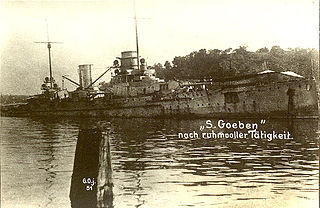
The Battle of Imbros was a naval action that took place during the First World War. The battle occurred on 20 January 1918 when an Ottoman squadron engaged a flotilla of the British Royal Navy off the island of Imbros in the Aegean Sea. A lack of heavy Allied warships in the area allowed the Ottoman battlecruiser Yavûz Sultân Selîm and light cruiser Midilli to sortie into the Mediterranean and attack the Royal Navy monitors and destroyers at Imbros before assaulting the naval base at Mudros.
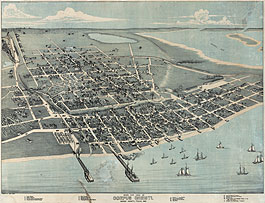
The Battle of Corpus Christi was fought between August 12 and August 18, 1862, during the American Civil War. United States Navy forces blockading Texas fought a small land and sea engagement with Confederate forces in and around Corpus Christi Bay and bombarded Corpus Christi. Union forces defeated Confederate States Navy ships operating in the area but were repulsed when they landed on the coast.
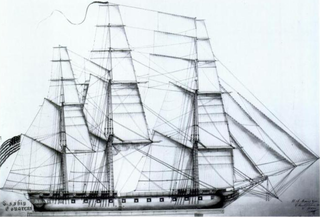
The West Indies Squadron, or the West Indies Station, was a United States Navy squadron that operated in the West Indies in the early nineteenth century. It was formed due to the need to suppress piracy in the Caribbean Sea, the Antilles and the Gulf of Mexico region of the Atlantic Ocean. This unit later engaged in the Second Seminole War until being combined with the Home Squadron in 1842. From 1822 to 1826 the squadron was based out of Saint Thomas Island until the Pensacola Naval Yard was constructed.
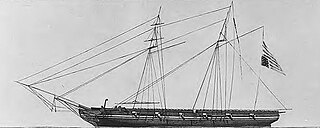
The West Indies Anti-Piracy Operations were a series of military operations and engagements undertaken by the United States Navy against pirates in and around the Antilles. Between 1814 and 1825, the American West Indies Squadron hunted pirates on both sea and land, primarily around Cuba and Puerto Rico. After the capture of Roberto Cofresi in 1825, acts of piracy became rare, and the operation was considered a success, although limited occurrences went on until slightly after the start of the 20th century.

The Rio de Janeiro Affair refers to a series of incidents during the Brazilian Naval Revolt in January 1894. Following three attacks on American merchant ships in the harbour of Rio de Janeiro, a bloodless naval engagement occurred between a United States Navy warship and an ironclad of Rear Admiral Saldanha da Gama's rebel fleet. Ultimately the Americans completed their objective, and Gama offered to surrender his fleet to the Americans, but the offer was never pursued.
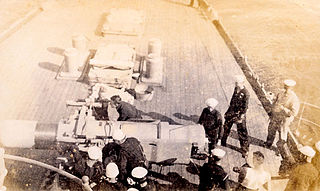
The Santo Domingo Affair, or the Santo Domingo Crisis, refers to an incident from 1 February 1904 to 11 February 1904 involving the United States and Dominican militia forces in the Dominican Republic. After the death of a seaman from the USS Yankee on February 1, the U.S. military launched a punitive expedition which routed the Dominican forces.

The Bombardment of Upolu, in 1841, was the second engagement with islanders of the Pacific Ocean during the United States Exploring Expedition.
The action of 10 May 1915, or Battle of the Bosporus, was a naval encounter between the Russian pre-dreadnought squadron and the Ottoman battlecruiser Yavuz Sultan Selim in the Black Sea, north of the Bosporus. After a brief exchange of fire the Ottomans withdrew. The battle took place during the main operation of the Black Sea Fleet aimed at shelling the Bosporus fortifications. The action of the battlecruiser led to the interruption of the operation, but it did not manage to inflict significant damage to the Russian fleet, suffering only minor damage itself.
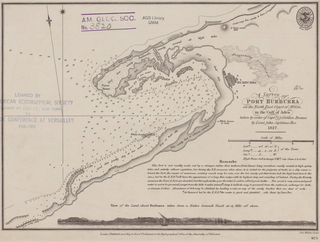
The Battle of Berbera was an engagement of the Royal Navy and East India Company against the Habr Awal clan. It was the culmination of previous British punitive expeditions against the Habr Awal.




















